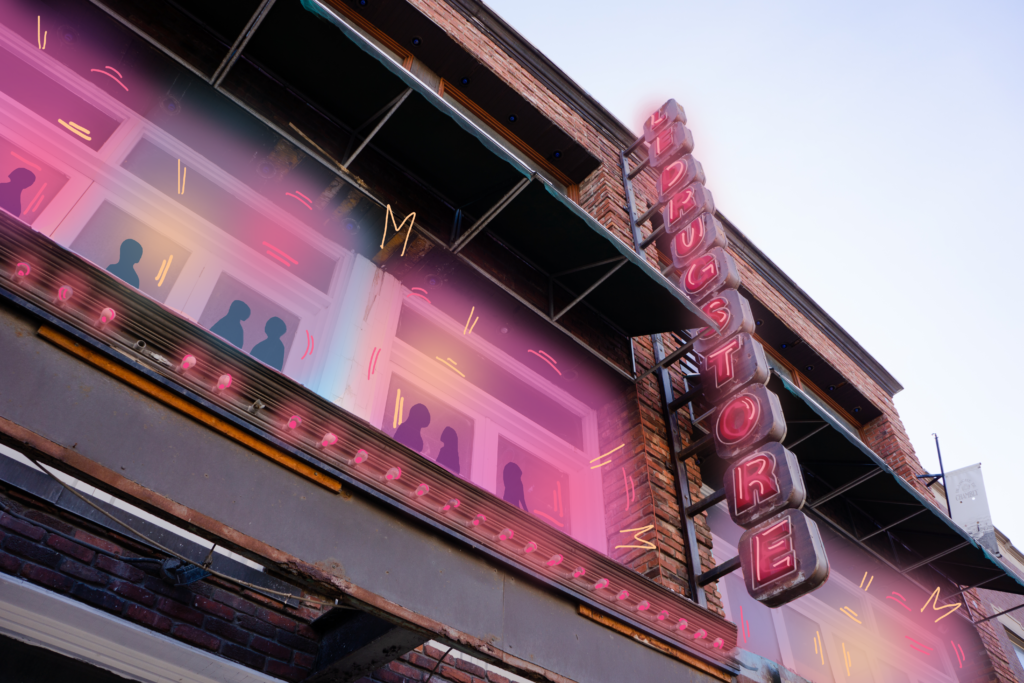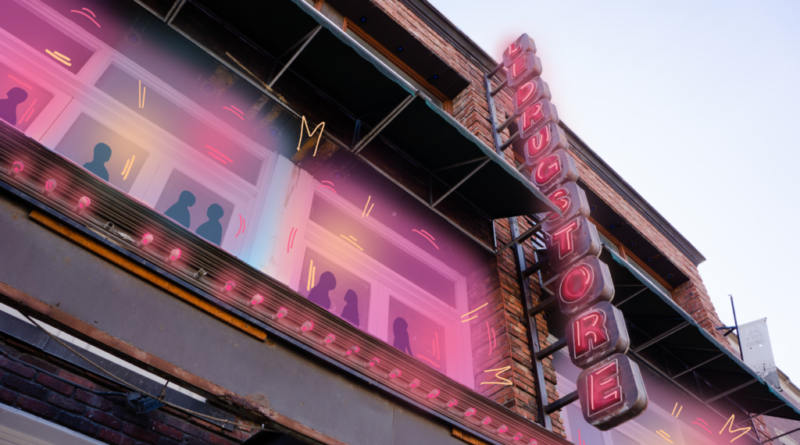Montreal bars: forgetting the sapphic experience – The Concordian

Montreal does not currently have a single lesbian bar, pushing the experiences of lesbian and sapphic people under the rug.
Despite being considered one of the most gay-friendly cities in the world, with many gay bars and a queer neighbourhood named the Village, Montreal does not have a lesbian bar. Indeed, the city’s last one, The Drugstore, closed in 2013 and no other lesbian or sapphic bar has opened since. This is a huge departure from 1988, when there were eight active lesbian bars in Montreal. Dr. Julie A. Podmore, an affiliate assistant professor at Concordia specializing in urban studies and human geography, refers to it as the “golden-age of lesbian-visibility” in a 2006 study called “Gone ‘underground’? Lesbian visibility and the consolidation of queer space in Montréal.”
Today, Montreal’s lesbian and sapphic community can meet through different events thrown by organizations like ElleLui, L nights or Sweet Like Honey, amongst others. These events allow for greater gender and racial diversity than most of the sex-segregated bars of the 1980s and ’90s. But their temporary nature doesn’t allow the community a permanent safe place to gather.
The Quebec Lesbian Network (RLQ) is an organization who represents queer women all over the province and speaks to different social and political entities to defend their rights and welfare. Cynthia Eysseric, the executive assistant of the RLQ shared her concerns. “It’s so important to create a community, and I think women of sexual diversity are really looking for that, to be in community with people who understand them and have the same reality.”
The Disappearance of Lesbian Bars
It’s not clear what led to the disappearance of lesbian bars in Montreal. In the same study mentioned previously, Dr. Podmore describes gentrification as a potential factor since most lesbian bars were found in the Plateau neighbourhood. The 1980s and ’90s brought many middle-class individuals to the Le-Plateau-Mont-Royal borough, regardless of gender and sexuality. It soon became one of the most expensive neighbourhoods in Montreal. In contrast, the Village, where most of the bars for gay men were located, gentrified at a much slower rate according to Podmore’s study, and attracted mostly middle-class gay men that increased the popularity of gay establishments.
Another possible factor is the diversification of the Village and the creation of mixed clubs. The 1990s saw an emergence of queer activism and community building with the fight against the HIV/AIDS epidemic, police repression and the start of the Pride movement. Many mixed queer clubs were created during this time and became popular with the new generation of lesbians, as opposed to the bars in the Plateau which had an older, francophone clientele.
The New Trend
“Usually, what we see in Montreal are events that will switch bars. These events are very precise, usually monthly and they’ll often be in recurring bars because the owners are either part of the community or their establishment is seen as very LGBTQ+ friendly,” said Eysseric.
Lucia Winter, co-founder and producer of ElleLui, shared their thoughts on the village in an interview with her two collaborators, Ray Resvick and Eloise Haliburton. “I’ve noticed that there has been an effort that has been made to diversify the types of parties and types of events that are being run in the village,” shared Winter.
According to their website, ElleLui is a production collective that organizes sapphic and lesbian parties in Tiohtià:ke (Montreal).
“However, it’s not as if club owners suddenly decided to invite lesbians, it’s sapphic organisers that are going out and creating these events,” added Resvick, a co-producer.
ElleLui events are popular and draw large crowds, despite only being created last year. Winter partly credits their success to being one of the first people to start organizing events shortly after the COVID-19 surge at the end of summer 2021. ElleLui, alongside other sapphic event organizers such as Sweet Like Honey, pride themselves on being as inclusive as possible of queer, trans, Black, Indigenous and people of color (QTBIPOC). This emphasis on inclusivity is an element that was missing from the lesbian bars of the past and the Village as a whole.
Jade Sullivan, a data analyst, activist and sapphic ballroom and exotic dancer, attends and performs at many of these Montreal sapphic events. “The community has to spend so much money just to be a part of sapphic spaces because you have to buy tickets to events to cover overhead costs, but with a bar you can just walk in and buy one drink,” shared Sullivan. She mentioned how grateful she is to be able to afford these events, but she knows many others who can’t afford tickets to community events.
Why Are Sapphic Spaces Important?
“The reason that a gay space is amazing depends on who you are,” shared Haliburton. “To walk into a space oriented for cis-gay men is probably amazing for cis-gay men, but that’s not my experience, I don’t relate to that.” Her colleague, Resvick, also mentioned the privilege that cis-men face is not shared by the whole queer community and that there are layers of intersection on top of sexuality such as gender, class, and race.
Lesbians also have less mainstream representation than gay men and face many stereotypes that they don’t. “Sometimes we’ll think that lesbians have no sexuality because of the absence of a man or lesbian relationships are seen as being for male sexual pleasure. Either way, lesbian relationships are not seen as legitimate,” shared Eysseric.
“The amount of harassment I experience when I go to a straight bar with a bunch of my lesbian friends is so bad. Even when we have sapphic events in certain bars, some men will still try to barge in,” shared Sullivan.
She also shared how as an exclusively sapphic exotic dancer, the number of spaces where she can perform are too small for her to support herself solely through exotic dancing. However, that’s not due to lack of demand.
“The sapphic nights were the most money that those bars made because of the amount of people coming in and because there were no other sapphic spaces that had that kind of exotic dancing,” she recalled. “That space was a lot more intersectional and diverse than what you see in a normal strip-club. It very much broke the binary of what we think exotic dancing is like.” Sullivan also raised the point that many gay men can make a living exotic dancing in the Village.
The loss of lesbian bars is not an issue unique to Montreal. According to data from The Lesbian Bar Project, there used to be over 200 lesbian bars in the United States. Today, there are only 24. The Lesbian Bar project raised $117,000 to help the remaining bars survive.
The lack of permanent spaces is not the only issue that the Montreal sapphic community faces; lack of representation and recognition are also issues.
“We’ve been fighting for years for the term lesbophobia to be recognized,” said Eysseric. “It’s really important because lesbophobia is the intersection between sexism and homophobia, which is a reality unique to women of sexual diversity.”
After years of hard work, the RLQ managed to have the term added to the Montreal Charter of Rights and Responsibilities in 2021. “It’s a term that’s very hard to be recognized, it’s not even in every French dictionary, so there is a long way to go,” she added. The Montreal sapphic community is still gathering despite the challenges they face, but there is still a long way to go for lesbian and sapphic acceptance.
